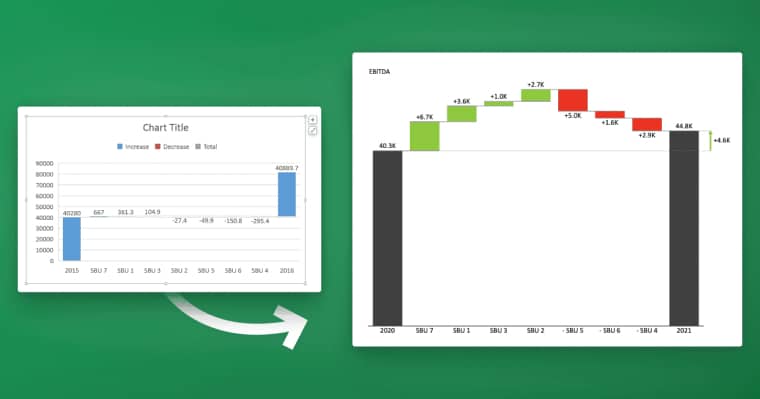Days Payable Outstanding (DPO) is a financial metric that measures the amount of time it takes for a company to pay its suppliers for goods and services received. DPO is an important performance indicator that allows businesses to better manage their cash flow and vendor relationships. In this article, we’ll take a deep dive into what DPO is, how to calculate it, and strategies for optimizing it.
Table of Contents
What is Days Payable Outstanding and why does it matter?
Days Payable Outstanding (DPO) is a financial ratio that measures the average number of days it takes a company to pay its suppliers for goods and services. This metric is calculated by dividing the total accounts payable by the cost of goods sold and then multiplying by the number of days in the period being measured.
DPO is an important metric because it provides valuable insights into a company’s cash flow management. By measuring the number of days it takes a company to pay its vendors, businesses can identify potential bottlenecks in their payment processes and develop strategies for optimizing their payments. Businesses with a high DPO can use this metric to demonstrate to investors and stakeholders that they are effectively managing their cash flow, minimizing costs, and maximizing profitability.
Furthermore, DPO can also be used to compare a company’s payment practices with those of its competitors. If a company has a significantly higher DPO than its competitors, it may indicate that the company is taking longer to pay its suppliers, which could potentially strain relationships and lead to supply chain disruptions. On the other hand, if a company has a lower DPO than its competitors, it may suggest that the company is paying its suppliers more quickly, which could improve relationships and lead to better terms and pricing in the future.
Understanding the significance of DPO in financial management
Days Payable Outstanding is an important financial management metric for monitoring cash flow and vendor relationships. A high DPO can provide valuable insights into a company’s financial health, indicating that it is able to pay its bills on time and is in good financial standing. A low DPO, on the other hand, can indicate inefficiencies in the payment process, poor cash flow management, and potential liquidity issues.
Businesses can use DPO to identify potential areas for improvement in their payment processes, such as optimizing invoice processing, negotiating better payment terms with vendors, and streamlining payment processing systems.
Another important aspect of DPO is its impact on a company’s working capital. A high DPO means that a company is able to hold onto its cash for a longer period of time, which can improve its liquidity and financial stability. However, a low DPO can put a strain on a company’s working capital, as it may need to pay its bills before it has received payment from its customers.
Furthermore, DPO can also be used to compare a company’s payment practices with those of its competitors. By benchmarking its DPO against industry standards, a company can gain insights into how it is performing relative to its peers and identify areas for improvement.
How to calculate Days Payable Outstanding (DPO)
The formula for calculating DPO is as follows:
DPO = (Accounts Payable / Cost of Goods Sold) X Number of Days in the Period
For example, if a company has $200,000 in accounts payable, $1,000,000 in cost of goods sold, and the period being measured is 365 days:
DPO = ($200,000 / $1,000,000) X 365
DPO = 73 days
Therefore, in this example, it takes the company an average of 73 days to pay its vendors.
The difference between DPO and other financial metrics
Days Payable Outstanding (DPO) is just one of several key financial metrics that businesses use to monitor their financial health. Other important metrics include Days Sales Outstanding (DSO), Inventory Turnover, and Gross Margin.
DSO measures the average number of days it takes a business to collect payment from its customers, while Inventory Turnover measures how many times a company sells and replaces its inventory in a given period. Gross Margin, on the other hand, measures the profitability of a business by subtracting the cost of goods sold from total revenue.
While these metrics are all important, DPO is particularly useful for managing cash flow and vendor relationships. By monitoring DPO, businesses can identify areas for improvement in their payment processes and work to optimize their cash flow.
How to optimize your DPO for better cash flow management
There are several strategies that businesses can use to optimize their DPO:
1. Negotiating better payment terms with vendors: One of the most effective ways to optimize DPO is to negotiate better payment terms with suppliers. This could include extending payment terms, asking for discounts for early or on-time payments, or negotiating volume discounts for larger orders.
2. Standardizing invoice processing: To improve payment processing times, businesses can standardize their invoicing processes to ensure that invoices are processed quickly and accurately. This could include automating the process of receiving and approving invoices, implementing a system for tracking payment due dates, and identifying potential bottlenecks in the payment process.
3. Implementing technology: Technology can also play a key role in optimizing DPO. For example, businesses can use electronic payment systems to automate payment processing and improve payment accuracy. They can also use software solutions to identify invoice errors and discrepancies.
Factors that affect your DPO and how to address them
There are several factors that can affect a company’s DPO, including:
1. Industry norms: The DPO for a particular industry can vary widely depending on factors such as payment cycles, purchase orders, and supplier relationships. Businesses should be aware of industry norms when setting DPO targets.
2. Payment terms: The payment terms that businesses have negotiated with their suppliers can also impact their DPO. Longer payment terms can result in a higher DPO, while shorter payment terms can result in a lower DPO.
3. Supplier relationships: The relationships that businesses have with their suppliers can also impact DPO. Strong supplier relationships can result in more flexible payment terms and better discounts, which can ultimately lead to a lower DPO.
The impact of supplier relationships on your DPO
Supplier relationships can have a significant impact on a company’s DPO. Strong supplier relationships can result in more flexibility around payment terms and improved discounts for early or on-time payments. On the other hand, strained supplier relationships can result in longer payment cycles and ultimately lead to a higher DPO.
To optimize supplier relationships, businesses can focus on improving communication, negotiating favorable terms, and considering working with suppliers on shared goals and objectives. By building strong relationships with suppliers, businesses can improve their DPO and ultimately increase profitability.
Best practices for managing your Days Payable Outstanding
There are several best practices that businesses should follow when managing their DPO:
1.Monitor DPO regularly: Businesses should track their DPO on a regular basis to identify potential areas for improvement and track progress over time.
2. Communicate with suppliers: Communication is key to maintaining strong supplier relationships. Businesses should communicate regularly with their suppliers to identify potential issues and find ways to address them.
3. Invest in technology: Technology can play a key role in optimizing DPO. Businesses should invest in payment processing solutions and other software that can help automate payment processing and improve payment accuracy.
Case studies: Companies with successful DPO strategies
Several companies have successfully implemented DPO strategies to optimize cash flow and improve financial performance. For example, Procter & Gamble was able to improve its DPO from 50 days to 75 days by renegotiating payment terms with suppliers and implementing a more efficient payment processing system.
Another example is retailer Walmart, which has been able to maintain a DPO of over 60 days by leveraging its bargaining power to negotiate more favorable payment terms with suppliers.
Common mistakes to avoid when managing your DPO
While DPO can be a valuable metric for optimizing cash flow and vendor relationships, there are several common mistakes that businesses should avoid when managing their DPO:
1. Focusing solely on DPO: While DPO is an important metric, it should not be the only metric that businesses use to monitor their financial health. Businesses should also monitor other key financial metrics, such as DSO, inventory turnover, and gross margin.
2. Ignoring supplier needs: While it can be tempting to prioritize payment cycles over supplier needs, businesses should work to maintain positive supplier relationships by paying suppliers on time and responding to their needs and concerns.
3. Not leveraging technology: Technology can play a key role in optimizing DPO. Businesses should invest in payment processing solutions and other software that can help automate payment processing and improve payment accuracy.
How to use technology to improve your DPO
Technology can play a critical role in optimizing DPO. Businesses can leverage technology to automate payment processing, improve payment accuracy, and streamline invoice processing. Some specific examples of technology solutions that can help improve DPO include:
1. Electronic payment systems: Electronic payment systems can help automate payment processing and improve payment accuracy.
2. Invoice processing software: Invoice processing software can help businesses automate the process of receiving and approving invoices, minimizing the risk of errors and discrepancies.
3. Supplier relationship management software: Supplier relationship management software can help businesses maintain positive relationships with suppliers, negotiate more favorable payment terms, and optimize DPO.
Key performance indicators for measuring the effectiveness of your DPO strategy
Businesses can use several key performance indicators to measure the effectiveness of their DPO strategy, including:
1. DPO trend analysis: By tracking DPO over time, businesses can identify trends and monitor progress in optimizing DPO.
2. Percentage of timely payments: By tracking the percentage of timely payments, businesses can ensure that they are meeting their payment obligations and maintaining positive supplier relationships.
3. Percentage of discounts earned: By tracking the percentage of early or on-time payments that result in discounts, businesses can assess the effectiveness of their payment optimization strategies and identify potential areas for improvement.
The future of Days Payable Outstanding: Trends and predictions
Looking forward, there are several trends and predictions related to DPO:
1. Increasing adoption of technology: As businesses seek to optimize their payment processes, we can expect to see increasing adoption of payment processing solutions and other technology solutions that streamline payment processing and improve payment accuracy.
2. Greater use of data analytics: As data analytics tools become more advanced, businesses will be able to more accurately measure the effectiveness of their DPO strategies and identify potential areas for improvement.
3. Continue focus on supplier relationships: As supplier relationships continue to play a critical role in DPO, we can expect to see businesses place an increased focus on building and maintaining positive supplier relationships.
Conclusion
Days Payable Outstanding (DPO) is an important financial metric that can provide valuable insights into a company’s cash flow management and vendor relationships. By understanding how to calculate DPO, optimizing payment processing, and leveraging technology solutions, businesses can improve their DPO, optimize cash flow, and improve profitability. With the growing trend towards technology optimization and data analytics, we can expect to see DPO continue to play a critical role in financial management for businesses in a variety of industries.














